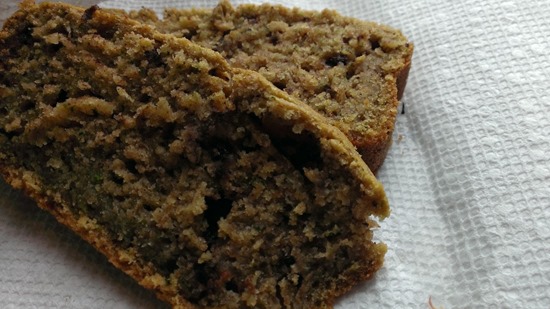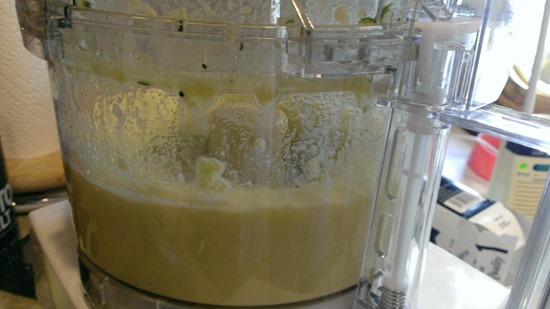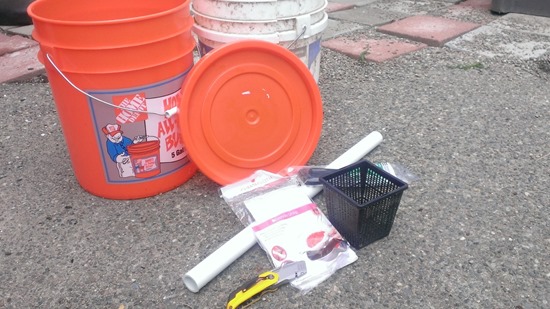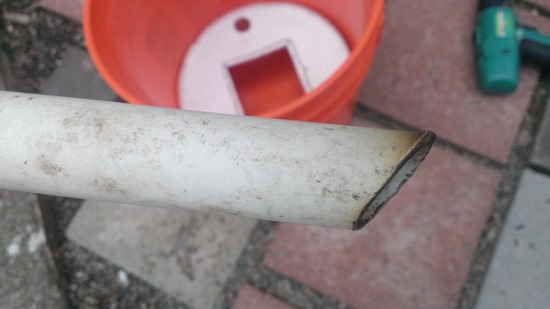Delicious zucchini bread recipe
10.8 years ago Uncategorized

The great thing about growing zucchini in your garden is it is a great producer, but at times you can get overwhelmed with the yields but fortunately zucchini bread is a delicious way to take a care of this problem. Below is my favorite recipe, typically you would swap out the chocolate chips with something like walnuts but have a kiddo with nut allergies and it is always easier to get kids to eat some veggies hidden in bread when you add a little chocolate 🙂
- 1.5 cups flour
- ½ teaspoon salt
- ½ teaspoon baking soda
- ½ teaspoon baking powder
- 2 teaspoons ground cinnamon
- 2 eggs
- ¼ cup vegetable oil
- ¼ cup butter (softened)
- 1¼ cups white sugar
- 2 teaspoons vanilla extract
- 1 cups grated zucchini (one medium zucchini)
- ⅓ cup chocolate chips
- Grease one 8 x 4 inch bread pan. Preheat oven to 325 degrees F .
- Add flour, salt, baking powder/soda, and cinnamon in a small bowl.
- Beat eggs, butter, oil, vanilla, and sugar together in a large bowl. Flour from bowl to the creamed mixture, and beat well. Stir in zucchini and chocolate chips until well combined. Pour batter into prepared pan.
- Bake for 45 to 60 minutes, or until wooden toothpick/skewer comes out clean when inserted in the center. Cool in pan on rack for 20 minutes

If you own a food processor you can shred the zucchini, switch to the chopper attachment and pulse for 2-3 seconds and remove zucchini into small bowl. Add wet ingredients and turn on for 30 seconds, add dry ingredients, zucchini, and chocolate chips and run for 5-10 seconds (until well combined) and you are ready to pour into pans and bake to deliciousness.
Hydroponic gardening kits in your living room via Home Lohas
10.9 years ago Uncategorized

Here are some awesome modular hydroponics setups by Home Lohas. Pretty much a supersized version of an Aerogarden, they use timers and proprietary selection of nutrient solutions to provide produce without soil and advertised in harvest times with 30% less time.
![home-lohas-2013-06-07[1] home-lohas-2013-06-07[1]](http://www.cheapvegetablegardener.com/wp-content/uploads/2013/06/homelohas201306071.jpg)
They use a full spectrum LED light system to provide adequate light without running up a huge water bill. Lights/pumps are completely automated so pretty much a turn key system.

Ok now the bad news the retail cost of one of these bad boys is $530US…so this will not be on my purchase list but is aesthetically pleasing enough I could see my hydroponics move from the garage to the living room if the price came down some.
Via Engadget
Gnomes in the garden
10.9 years ago Uncategorized

Pretty awesome Ikea commercial involving gnomes, fortunately for me I just have one gnome and he is always sleeping.
How to make a self watering planter with a 5 gallon bucket
10.9 years ago Uncategorized

Container gardening can be an excellent way to take advantage of normally unusable space on your patio or garden. The main problem I have with container gardens is they can dry out very quickly and for plants like tomatoes and cucumbers this can be a quick death for your plants, my solution to this was to build a self watering planter using just a few tools and a 5-gallon bucket and lid.
Materials for 5-gallon bucket self watering planter:

- 5 gallon bucket with lid
- Another 5 gallon bucket busted one like mine is fine (optional)
- 1.5 feet of 3/4 in PVC pipe (other sizes are ok but aim will have to be better for smaller sizes when watering)
- Utility knife
- 4 inch net pot
- cheese cloth
- Jig-saw (optional but speeds things up)
Construction for 5-gallon bucket self watering planter:
Step 1: Make hole for net pot. I started by tracing the pot on the bottom of my broken bucket.

Obviously if I cut on this line I drew the net would fall right in so a freehanded a line inside with about 1/4 inch in and cut it out with a utility knife. I chose a square net pot since straight lines are much easier with a knife but if I would going to make a half dozen of these things I probably would get a good hole saw and use some round net pots.

Step 2: Cut bucket to size. For the desired height of the net pot in the reservoir I found that cutting the bottom of the bucket to 2.5 inches was perfect for me. Now you can definitely to this with a utility knife, but a jig saw can make the job much quicker.

Step 3: Put some pieces together. Now place the recently cut bucket bottom side up into the other bucket and push down until it is firmly in place. Then drop in the net pot.

Step 4: Add watering tube. I decided to cut the bottom of the tube at an angle to ensure that water flow was not blocked when pushed to the bottom (especially if some sediments starts to build up on the bottom. I also used a hole saw to make sure I had a nice clean circle though this could be done with a utility knife as well with a little patience.

Drop the filling tube in the hole and you are almost ready to start filling the planter with soil.
Step 5: Finishing touches. I decided to add extra holes to enable some additional aeration from below.

To reduce soil from sneaking into the reservoir I lined the bottom with a couple layers of cheese cloth as a bit of a filter.

Finally I added a overfill hole approximately 1/4 of an inch below the top of the net pot. This will prevent the plant from getting too much water and also allows a gap of air to exist between the water and the plant for additional aeration.

Step 6: Getting planter ready for plants. Now it is time to to fill the planter with potting mix. If you are using organic fertilizer like myself I added some to the mix and combined well in the bucket. If you are using conventional fertilizer you will want to add a ring on the top of the soil around the perimeter of the planter. This will ensure you do not shock/burn the newly added plants when they are added.
Next you should top the planter with some plastic. This will keep weeds from getting in your soil but also help prevent water loss from evaporation. You can use a dark color to provide some additional heat for something like peppers, but given I was planning on planting some cucumbers I went with white plastic which I conveniently reused from the bag the potting mix came in. And secure it in place with the bucket lid where I removed the middle quickly with a utility knife. Note: Don’t throw away the middle if you don’t have an extra bucket to sacrifice for a planter, with some minimal support (PVC pipe and zip ties this could be used as the bottom of a planter.

Step 7: Time to plant. Start by cutting an X in the plastic to allow enough room to add you plant to you planter.

Finally drop in your plant and add water till you see water coming out of the overflow and enjoy your harvest to come with out having to worry about watering your container plants a couple times a day.

Just for fun when watering I did get some water on the plastic and poked a small hole where the water was piling up. This will prevent having some standing water when it rains but also provide some free water to the reservoir.
So if you have little/no ground to plant or more like me and just get absent minded to water frequently for about $5-6 in parts and about 15-20 minutes of work you can make your own self-watering planter.
Happy to see some help in my garden
11 years ago Uncategorized

I am also getting some help watering the zucchinis…

She has really grown up since last time I posted a picture



